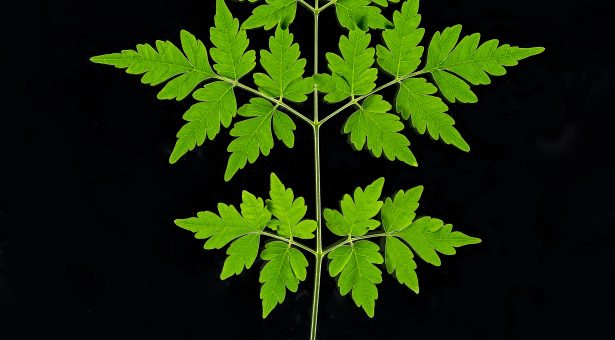Norwich, United Kingdom
January 26, 2023

Innovative research has uncovered the secret of how plants make limonoids, a family of valuable organic chemicals which include bee-friendly insecticides and have potential as anti-cancer drugs.
The research team, a collaboration between the John Innes Centre and Stanford University, used ground-breaking methods to reveal the biosynthetic pathway of these useful molecules, which are made by certain plant families, including mahogany and citrus.
In the study which appears in Science, the John Innes Centre research team used genomic tools to map the genome of Chinaberry (Melia azedarach), a mahogany species, and combined this with molecular analysis to reveal the enzymes in the biosynthetic pathway.
“By finding the enzymes required to make limonoids, we have opened the door to an alternate production source of these valuable chemicals,” explained Dr Hannah Hodgson, co-first author of the paper and a postdoctoral scientist at the John Innes Centre.
Until now limonoids, a type of triterpene, could only be produced by extraction from plant material.
Dr Hodgson explains, “Their structures are too complicated to efficiently make by chemical synthesis. With the knowledge of the biosynthetic pathway, it is now possible to use a host organism to produce these compounds.” she added.
Armed with the complete biosynthetic pathway researchers can now produce the chemicals in commonly used host plants such as Nicotiana benthamiana. This method can produce larger quantities of limonoids in a more sustainable way.
Increasing the supply of limonoids could enable the more widespread use of azadirachtin, the anti-insect limonoid obtained from the neem tree and used in commercial and traditional crop protection. Azadirachtin is an effective, fast degrading, bee-friendly option for crop protection but is not widely used due to limited supply.
The team made two relatively simple limonoids, azadirone from Chinaberry and kihadalactone A from citrus, and believe that the methods used here can now be applied as a template for making more complicated triterpenes.
Professor Anne Osbourn, group leader at the John Innes Centre and co-corresponding author of the study said: “Plants make a wide variety of specialised metabolites that can be useful to humans. We are only just starting to understand how plants make complex chemicals like limonoids. Prior to this project, their biosynthesis and the enzymes involved were completely unknown, now the door is open for future research to build on this knowledge, which could benefit people in many ways.”
Another example of a high value limonoid which the team hopes to produce is the anti-cancer drug candidate nimbolide, this work could enable easier access to limonoids like nimbolide to enable further study. As well as producing known products like nimbolide, the research team say the door may open to understanding new activities for limonoids that have not yet been investigated.
The team at the John Innes Centre were funded by Syngenta and BBSRC via an industrial partnership award.
Complex scaffold remodeling in plant triterpene biosynthesis appears in Science. DOI: 10.1126/science.adf1017
Research Method in More Detail
The team at John Innes used genomic tools to assemble a chromosome level genome for Chinaberry (Melia azedarach), within which they found the genes encoding 10 additional enzymes required to produce the azadirachtin precursor, azadirone. In parallel, the team working at Stanford were able to find the 12 additional enzymes required to make khidalactone A.
Expressing these enzymes in N. benthamiana enabled their characterisation, with the help of both Liquid chromatography–mass spectrometry (LC-MS) and Nuclear Magnetic Resonance (NMR) Spectroscopy, technologies that allow molecular level analysis of samples.